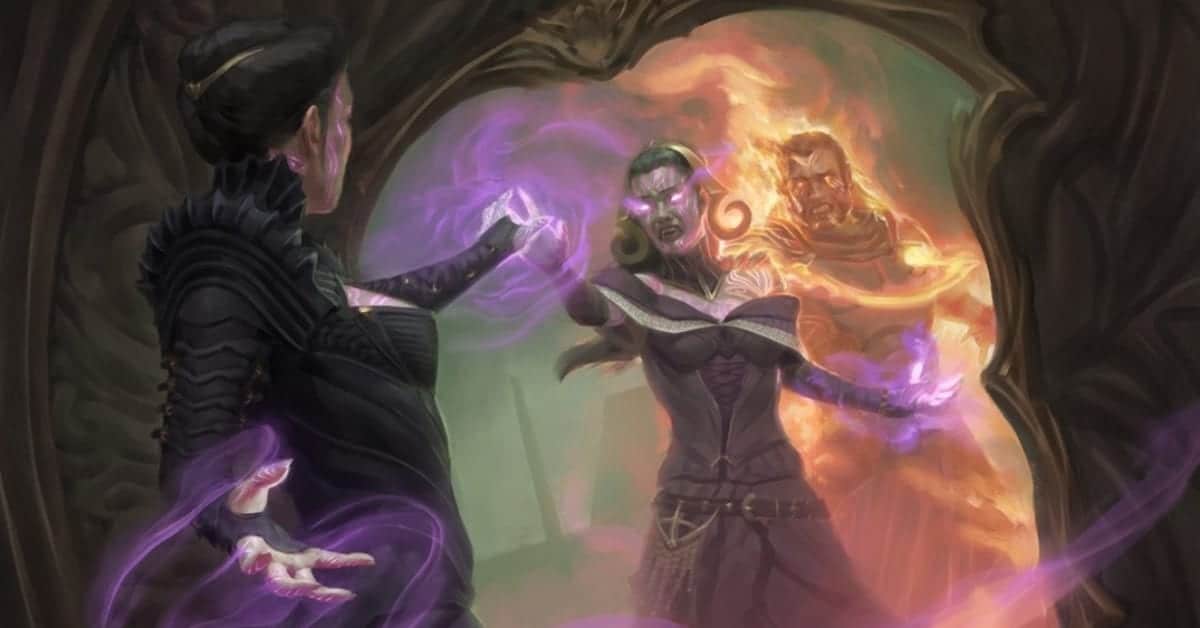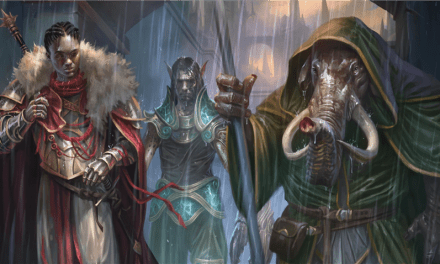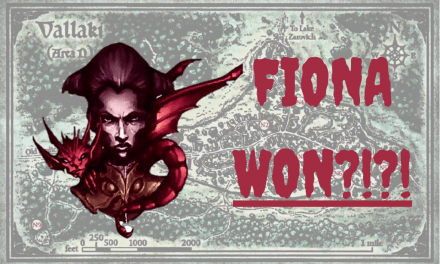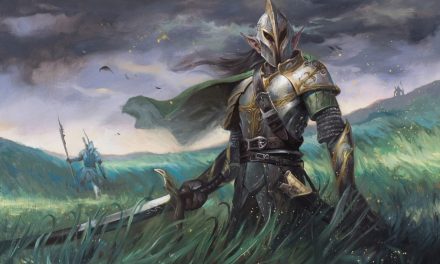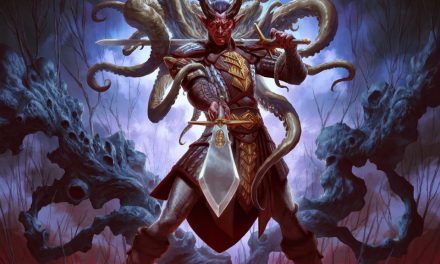In exchange for power and knowledge, a Warlock has made a pact with some powerful and otherworldly being.
Using their arcane powers and the eldritch abilities granted to them by their patron, Warlocks come in many different forms. Whether blasting or slashing their way through enemies, none can come become the Warlock and their patron’s agenda.
In this in-depth guide, we’re going over the Warlock class in D&D 5e. You’ll see all of the Warlock’s features and options as well as get tons of tips for optimizing your character.
So just sign the contract on the dotted line, ignore that bit of fine print there, and ready that Eldritch Blast…
This is the Ultimate Class Guide to the Warlock in D&D 5e!
Warlock Class Guide for D&D 5e
Warlocks are one of the most varied classes in D&D 5e. Some are blasters while others offer a great deal of utility or even healing to their party. Still, others stand on the party’s front lines with a mix of martial and arcane prowess!
Furthering their own goals (and those of their Patron), Warlocks can be built in many unique and interesting ways depending on your playstyle and your vision for the character.
One Warlock might be capable of reducing their enemies to ash by summoning forth the very fires of the Nine Hells. Meanwhile, another might have more of a penchant for reading and manipulating minds as they pursue banned and forgotten knowledge recorded by mad arcanists centuries ago.
Others might blur the lines between this plane of existence and another. Living or dead? Humanoid or Fey?
Between your Otherworldly Patrons (i.e. Warlock subclasses), Pact Boons, and Eldritch Invocations, you’ve got a ton of exciting options for building your Warlock!
But we’ll get to all of that later in this guide. First things first, we need to look at what all Warlocks have in common.
You can find the Warlock class on page 105 of the Player’s Handbook.
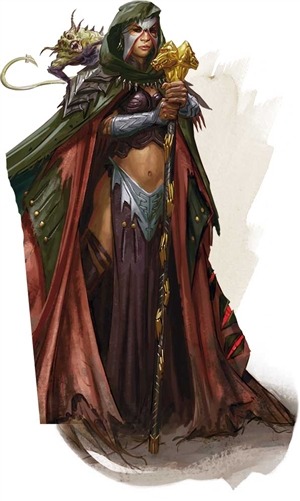
The Warlock Table
You will want to be mindful of the Warlock Table as you level up.
This shows the features you gain at each level as well as how many Invocations you can know. (Invocations are incredibly fun and powerful, so you want to make sure you’re taking advantage of them!)
| Level | Proficiency Bonus | Features | Invocations Known |
| 1 | +2 | Otherworldly Patron, Pact Magic | – |
| 2 | +2 | Eldritch Invocations | 2 |
| 3 | +2 | Pact Boon | 2 |
| 4 | +2 | Ability Score Improvement | 2 |
| 5 | +3 | – | 3 |
| 6 | +3 | Otherworldly Patron Feature | 3 |
| 7 | +3 | – | 4 |
| 8 | +3 | Ability Score Improvement | 4 |
| 9 | +4 | – | 5 |
| 10 | +4 | Otherworldly Patron Feature | 5 |
| 11 | +4 | Mystic Arcanum (Level 6) | 5 |
| 12 | +4 | Ability Score Improvement | 6 |
| 13 | +5 | Mystic Improvement (Level 7) | 6 |
| 14 | +5 | Otherworldly Patron Feature | 6 |
| 15 | +5 | Mystic Arcanum (Level 8) | 7 |
| 16 | +5 | Ability Score Improvement | 7 |
| 17 | +6 | Mystic Arcanum (Level 9) | 7 |
| 18 | +6 | – | 8 |
| 19 | +6 | Ability Score Improvement | 8 |
| 20 | +6 | Eldritch Master | 8 |
Warlock Class Features
So let’s begin with the features that all Warlocks have in common. If you’re making a Warlock character, these are the features that they will be starting with.
Warlock Hit Points
Hit Dice: 1d8 per Warlock level
Hit Points at Level 1: 8 + your Constitution modifier
Hit Points at Higher Levels: 1d8 (average of 5) + your Constitution modifier per Warlock level beyond 1st
Warlock Proficiencies
Armor: Light Armor
Weapons: Simple Weapons
Tools: None
Saving Throws: Wisdom, Charisma
Skills: Choose two skills from Arcana, Deception, History, Intimidation, Investigation, Nature, and Religion
Warlock Starting Equipment
In addition to any equipment you receive from your background, you start with the following equipment:
- A light crossbow and 20 bolts OR any simple weapon
- A component pouch OR an arcane focus
- A scholar’s pack OR a dungeoneer’s pack
- Leather armor, any simple weapon, and two daggers
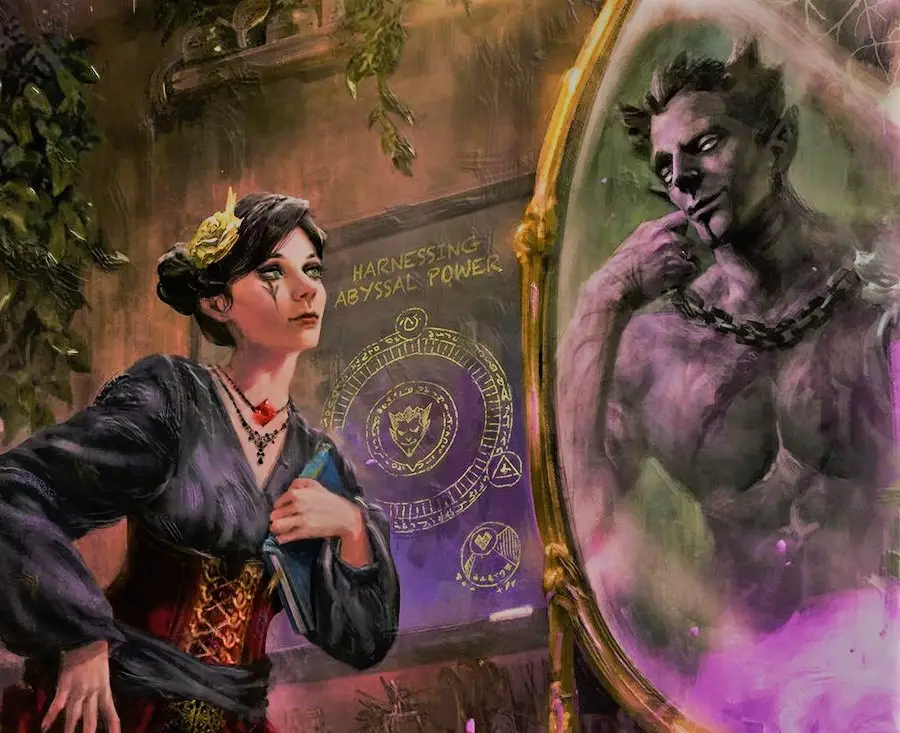
Otherworldly Patron (Level 1)
Entering a pact with your Patron, you become a level 1 Warlock once the deal has been struck. The Otherworldly Patron that you choose is your character’s subclass and determines what kinds of features you will gain.
Currently, there are 9 officially published Otherworldly Patrons to choose from.
| Book | Otherworldly Patrons |
| Player’s Handbook | Archfey, Fiend, Great Old One |
| Sword Coast Adventurer’s Guide | Undying |
| Xanathar’s Guide to Everything | Celestial, Hexblade |
| Tasha’s Cauldron of Everything | Fathomless, Genie |
| Van Richten’s Guide to Ravenloft | Undead |
We’ll go over the Patrons in more detail in the Subclasses section of this guide.
Pact Magic (Level 1)
Warlocks’ spellcasting comes from some mix of study and arcane powers given to them by their Patron.
The basic Warlock spell list heavily features offensive spell options but also offers some strong utility options.
Your choice of Patron will also give you access to an expanded spell list based on that Patron’s nature.
A Fiend Warlock, for example, gains more fiery and offensive spells with some debuff/control options mixed in. Meanwhile, a Celestial Warlock gains healing and restorative spells with a couple of new offensive options.
We’ll go over the details of the Warlock’s spellcasting in the Warlock Spellcasting section of this guide.
Eldritch Invocations (Level 2)
It’s easy to bash Warlocks for having such a small number of spell slots, but their Eldritch Invocations more than make up for that.
At level 2, Warlocks gain 2 Eldritch Invocations which give them special features. You’ll gain more as you level up and can see the number of Eldritch Invocations you know on the Warlock Table.
Some Invocations may be ongoing, passive effects like gaining the ability to read all writing or being able to see through both normal and magical darkness. Others give you options for conjuring spell effects without needing to touch your precious spell slots.
If you find yourself no longer needing a particular Eldritch Invocation, you can swap it out when you gain a Warlock level.
These are incredibly important to playing a Warlock, so be sure to check out my article that covers the Eldritch Invocations in depth. That should be able to answer any questions you have about Invocations while also providing you with ideas for the best ones to choose for your Warlock!
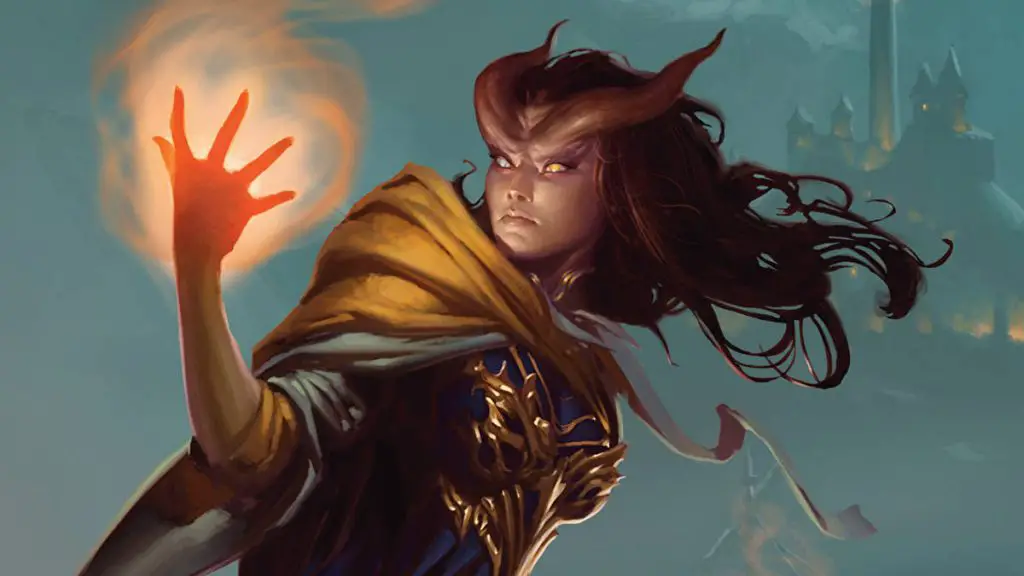
Pact Boon (Level 3)
At level 3, you select a Pact Boon for your Warlock.
Most classes in D&D 5e have their base features but then specialize with their chosen subclass. Warlocks are a bit more complicated than that, though.
For your subclass, you choose an Otherworldly Patron for your Warlock. Pact Boons are effectively a type of further specialization.
The Pact Boon that you choose gives you specific benefits depending on which one you choose. Additionally, some Eldritch Invocations can only be learned if you’ve chosen a specific Pact Boon.
You have four Pact Boon options:
- Blade – Summon a pact weapon and fight on the front lines
- Chain – Gain a familiar and new ways to use them
- Talisman – A mystical Talisman provides defense/utility to you and/or the wearer
- Tome – Unlock even more knowledge and spellcasting ability
Much like with Eldritch Invocations, Pact Boons are a very important (but frequently confusing) part of the Warlock class. I do have an article that explains Pact Boons in more depth that will help you!
Additionally, in each of my Warlock subclass guides, there is a section about Pact Boons and how they interact with a given Patron.
(Yes, Pact Boons are THAT important!)
Mystic Arcanum (Level 11)
Warlock spell slot levels cap at level 5, but Mystic Arcanum is what lets you access spells beyond that.
At level 11, you can choose one level 6 spell from the Warlock spell list. You can cast this spell once per long rest without having to spend a spell slot to do so.
You’ll gain access to more Mystic Arcanum features as you level up.
| Warlock Level | Mystic Arcanum Spell Level |
| 11 | 6 |
| 13 | 7 |
| 15 | 8 |
| 17 | 9 |
Eldritch Master (Level 20)
Your level 20 capstone feature is Eldritch Master.
Warlocks regain their spell slots on a short rest, but sometimes you don’t have an hour to spare. When time is a factor, Eldritch Master lets you ask your Patron to recover your spell slots.
Asking your Patron for this favor takes 1 minute and restores all the spell slots you used with your Pact Magic feature.
Since nobody likes a nuisance (especially powerful beings capable of giving you your powers in the first place), you can do this once per long rest.
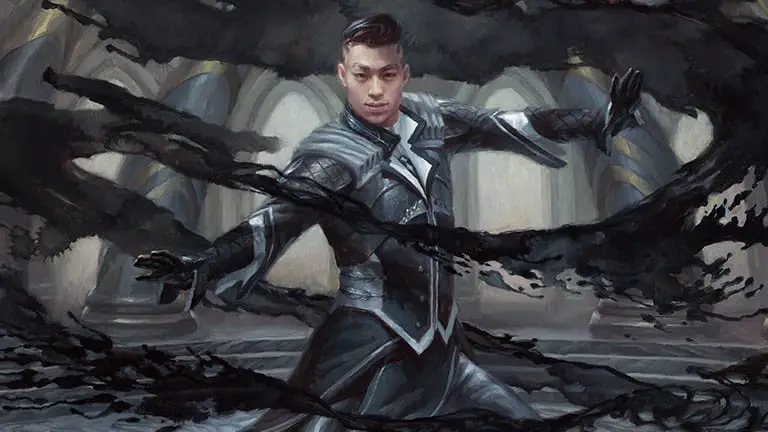
Optional Class Features for Warlocks from Tasha’s Cauldron
Warlocks gained a lot of new features in Tasha’s Cauldron of Everything. These are optional, but they add a lot to the experience of playing a Warlock.
Check with your DM to make sure that they’re cool with using content from TCoE in your game. (They probably won’t have a problem with it but going over what books can be used is an important part of a good Session Zero!)
Additional Warlock Spells
The first optional feature Warlocks gain in Tasha’s Cauldron gets you more spells for the Warlock Spell List.
In total, there are 20 new spells added to your list of available spells across various levels. You gain at least one new spell of each spell level.
The specific spells can be found on page 70 of Tasha’s Cauldron of Everything.
Pact Boon Option
We’ve already covered the Pact Boon option introduced in TCoE, the Pact of the Talisman.
The Pact of the Talisman and the Eldritch Invocations that are unique to it gives you some handy defensive and utility options.
Most notably you can also hand the Talisman to an ally so that they can benefit from its power as well.
Eldritch Versatility
When you reach a Warlock level that gives you an Ability Score Improvement (level 4, 8, 12, 16, and 19), you can change up certain elements of your character’s build.
Specifically:
- Replace one cantrip you learned from the Warlock’s Pact Magic feature with another cantrip from the Warlock spell list.
- Change your Pact Boon to a different option
- Replace one spell from your Mystic Arcanum feature with another Warlock spell of the same level. (You must be level 12 or higher.)
Make sure that changing any of this doesn’t affect your eligibility for your Eldritch Invocations. If you no longer meet the requirements for an Invocation, you must replace it with an Eldritch Invocation that you meet the requirements for.
Eldritch Invocations
Tasha’s Cauldron also introduces 8 new Eldritch Invocations for Warlocks.
Of these, two are available to all Warlocks. One is exclusive to Pact of the Chain, two are exclusive to the Pact of the Tome, and three are only available for the Pact of the Talisman.
These are also found starting on page 70 of Tasha’s Cauldron of Everything.
This essential guide offers new subclasses, spells, magic items, and innovative rules for character customization and game mastery. Elevate your adventures and inspire creativity with this must-have addition to your collection. Get your copy now!
The Warlock’s Role in the Party
Because there are so many different ways to build your Warlock, it’s difficult to place the Warlock class in a specific role.
However, there are some roles that Warlocks tend to fill more often than others.
- Face (Charisma is your most important ability score which can make you very convincing!)
- Blaster (You’ve got no shortage of ways to blast your enemies to kingdom come.)
- Control (Buffing yourself and your allies while debuffing enemies and zoning out entire areas of the battlefield with AoE effects.)
This isn’t to say that Warlocks can’t fill other roles. Depending on your choice of Patron, Pact Boon, and Eldritch Invocations, you can be uniquely able to fill roles beyond what I’ve mentioned here.
Hexblades, for example, make for excellent front-line melee combatants. Meanwhile, Genie and Great Old One Warlocks bring a great deal of utility to their party.
Warlock Subclasses
So, we’ve mentioned several of the Otherworldly Patrons by this point, so now is a great time to look at your subclass options.
You choose your Warlock’s Otherworldly Patron at level 1.
The features granted to you by your patron help you focus on specific roles within the party. These features enhance existing Warlock abilities while also providing them with new ones.
In most cases, a Patron and Pact Boon can entirely change how one Warlock plays from another of the same Patron or Pact Boon!
If we’re considering each Patron/Pact Boon combination as its own unique subclass, you’ve effectively got 36 options. Or 48 if you consider that the Genie Warlock is also choosing from four different types of Genie patrons!
No pressure, right?
It helps if you “work backward” when playing a Warlock. Figure out what you want your character to do and what role they can fill first. You’ll have a much easier time figuring out what Pact Boons, Invocations, and Patron to take that way!
Of course, I have my own thoughts on how each of the Warlock subclasses ranks, but the best Warlock is the one that YOU want to play.
So, let’s quickly look over each of your Patron options. I’ll include a link to each of the Warlock subclass guides in each section.
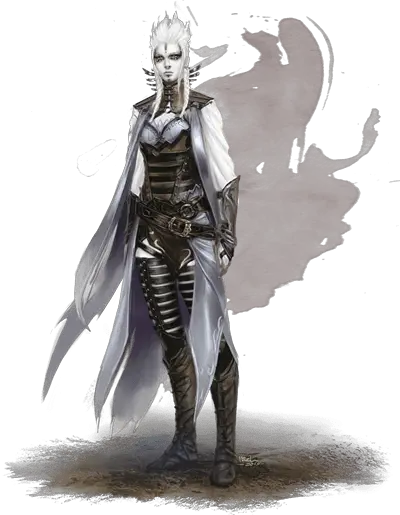
The Archfey
Making a pact with a powerful being from the Feywild, you use your magic to trick and enchant others.
Archfey Warlocks are exceptionally good as the party’s Face. Whether in combat or out of it, illusions and enchantments are these Warlocks’ most reliable talents.
- Fey Presence: Charm or Frighten all those around you!
- Misty Escape: Turn invisible and teleport 60 feet away upon taking damage!
- Beguiling Defenses: Become immune to charm effects. Even better, throw enemies’ charms right back in their face to turn the tables!
- Dark Delirium: Trap a creature’s mind in an illusory realm of your own creation. Useful for charming or terrifying others as you see fit!
Check out the full Archfey Warlock Guide for more!
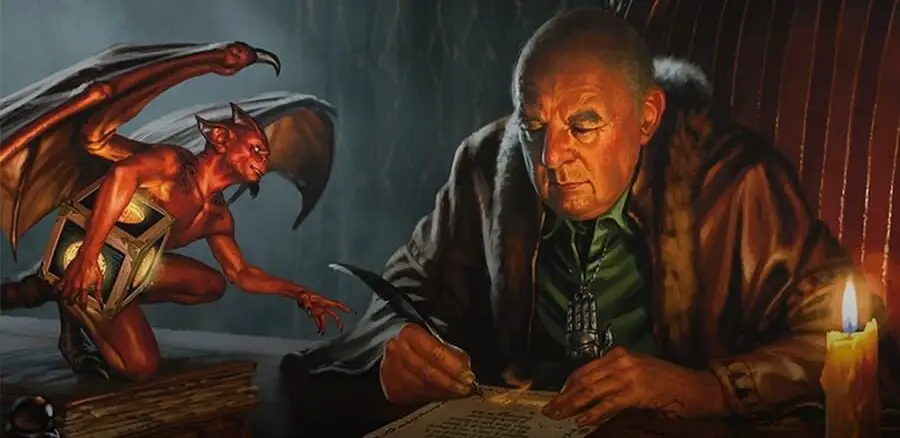
The Fiend
When most people think of Warlocks, the Fiend is immediately what comes to mind. It’s the age-old legend of someone trading their soul to some infernal being in exchange for knowledge and power.
The Fiend Warlock gets a ton of wonderful offensive features but also receives some incredible defensive buffs as well.
With the fires of the Lower Planes under their command, the Fiend Warlock makes for an excellent blaster.
- Dark One’s Blessing: Dropping enemies gives you temporary hit points so you’re even tougher!
- Dark One’s Own Luck: Add an extra d10 to an ability check or saving throw once per short rest!
- Fiendish Resilience: Gain resistance to your chosen damage type. You can change this after every short or long rest!
- Hurl Through Hell: Send your enemy flying through the Lower Planes. They’ll take a ton of damage and miss an entire round of combat. If you’re really clever, you can have another spell effect or trap waiting for them when they return!
Burn it all down with the full Fiend Warlock guide!
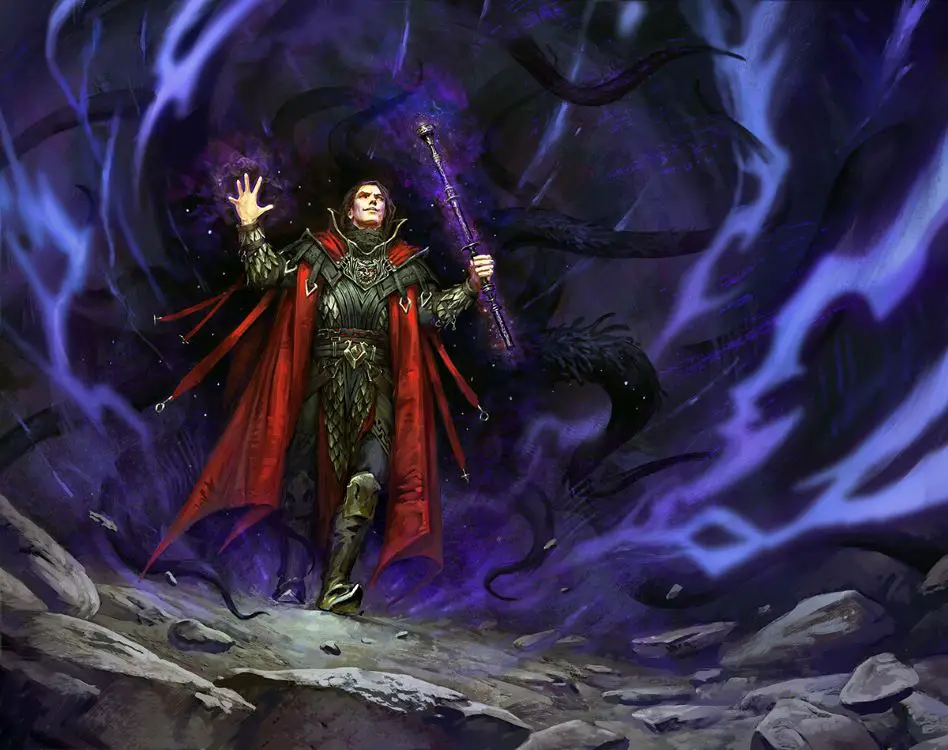
The Great Old One
If Lovecraftian and Cosmic Horror is your thing, you just might hear the Great Old One calling out to you. Everything you’ve ever dreamt of learning is just on the other side of sanity!
These Warlocks tend to be especially creepy and most have no concept of personal boundaries. Nevertheless, these Warlocks are great at rooting out information and manipulating the minds of others.
- Awakened Mind: Telepathic communication with no language barriers within 30 feet of you! Why would you ever communicate any other way?
- Entropic Ward: Use your reaction to give enemies disadvantage on their attacks. If they miss, your next attack has advantage!
- Thought Shield: Unless you allow it, your thoughts cannot be read. You also resist psychic damage and the creature dealing the damage takes the same amount of damage as you!
- Create Thrall: Charm an incapacitated target into being your loyal minion until you decide otherwise or the effect is dispelled.
Answer the call with the full guide to the Great Old One Warlock!

The Undying
These Warlocks have overcome the force of Death itself with the help of their Patron. In exchange for loyal service, they hope to unlock the secret of eternal life for themselves.
They might be in service to a powerful Lich or even a Fiend with influence over the forces of life and death.
- Among the Dead: Resist disease, preserve bodies, and naturally discourage undead from attacking you unless you are attacking them first.
- Defy Death: Succeeding on a death saving throw or stabilizing another creature lets you regain hit points.
- Undying Nature: You no longer need food, water, or sleep. You can’t be magically aged and you naturally only age 1 year for every 10 that pass.
- Indestructible Life: Regain hit points as a bonus action once per short rest. This can also be used to reattach limbs.
Cheat death with the guide to the Undying Warlock!
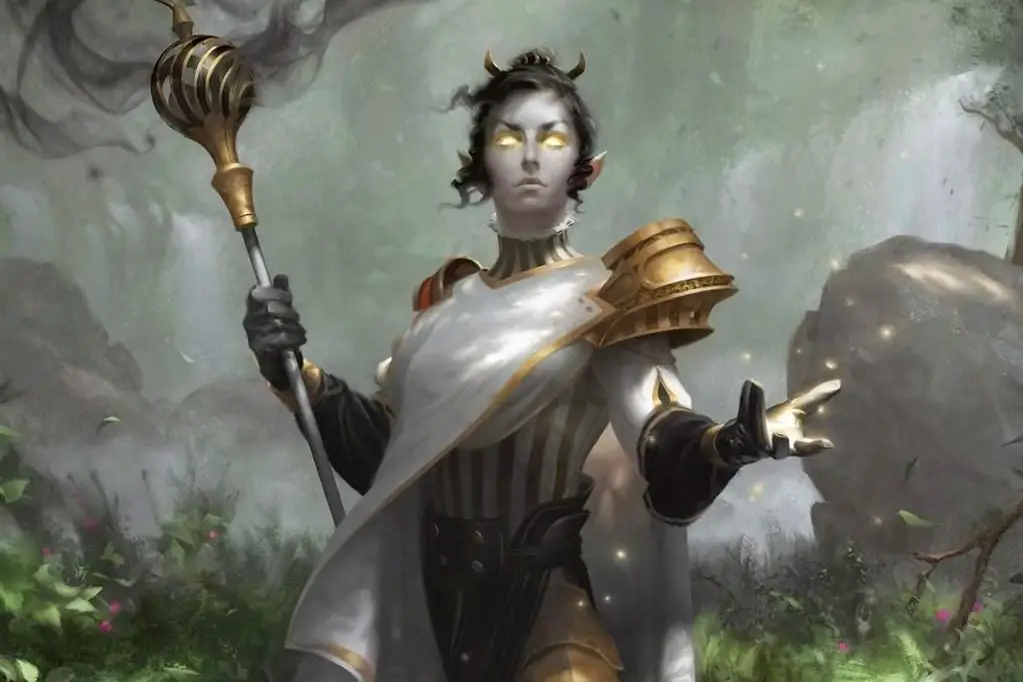
The Celestial
Celestial Warlocks answer a higher calling than their counterparts. Literally.
Think of this as a hybrid between the Cleric and Warlock. But where Clerics get their spells from their faith in a deity, Celestial Warlocks have been granted theirs as a deal with another Celestial being such as an Empyrean or a Deva.
Celestial Warlocks can still make for great blasters with Radiant and Fire damage, but they mostly focus on healing and supporting their allies.
- Bonus Cantrips: Gain the Light and Sacred Flame cantrips as bonuses!
- Healing Light: Gain a pool of d6s that can be used to heal creatures (including yourself) within 60 feet of you as a bonus action!
- Radiant Soul: Resist radiant damage while also buffing your spells that deal radiant or fire damage!
- Celestial Resilience: Get temporary hit points for yourself and your whole party when finishing any rest!
- Searing Vengeance: Instead of making a death saving throw, regain half of your hit points and cleanse enemies around you in the radiant fires of holy judgment!
Open the Heavens with this full guide to the Celestial Warlock subclass!
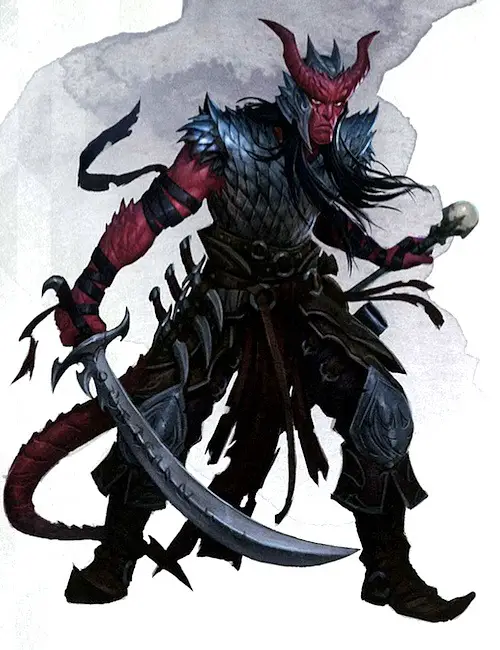
The Hexblade
Pulling power from the bleak realm of the Shadowfell, these Warlocks have bonded with a powerful weapon. Or, rather, the force that truly lies behind the weapon…
Casting vicious curses upon their enemies, the Hexblade stands at the party’s frontline as a melee combatant. It’s not unfair to consider this the Warlock’s answer to the Paladin class.
Hacking, slashing, and blasting their way through enemies, the Hexblade is all about locking enemies down and pumping out damage!
- Hexblade’s Curse: Curse a target to gain bonus damage against them, increase your chances of landing a critical hit, and regain hit points when they die.
- Hex Warrior: Add your Charisma modifier to attacks/damage with your chosen weapon. Also gain proficiency with medium armor, shields, and martial weapons.
- Accursed Specter: Raise defeated enemies’ spirits as specters under your command. How’s that for making friends?
- Armor of Hexes: Targets afflicted by your Hexblade’s Curse now might miss you entirely. Use your reaction to roll a d6. If it’s a 4 or higher, they miss regardless of what they rolled!
- Master of Hexes: Pass your Hexblade’s Curse from creature to creature as they die. That’s efficient cursing!
Sound fun? Check out the full guide to the Hexblade Warlock!

The Fathomless
Fathomless Warlocks have entered into an arrangement with some powerful entity deep beneath the water’s surface. This might be a Kraken, a being from the Elemental Plane of Water, or something otherwise unknown by even the most tenured of sailors.
Calling forth massive tentacles to assist them both offensively and defensively, these Warlocks embody the raw power of the sea. They are gifted combat casters who are also able to have a great deal of control on the battlefield.
- Tentacle of the Deeps: Summon a mighty tentacle to smack enemies and reduce their movement speed as a bonus action!
- Gift of the Sea: Gain permanent underwater breathing and a swimming speed of 40 feet!
- Oceanic Soul: Resist cold damage and overcome language barriers by taking a swim with your new friend!
- Guardian Coil: Your tentacles can now be used defensively to reduce damage taken by those near them!
- Grasping Tentacles: Gain the Evard’s Black Tentacles spell and cast it once per long rest for free! Casting this gives you temporary hit points and your concentration on the spell can’t be broken!
- Fathomless Plunge: Teleport yourself and your party in a whirl of tentacles to a body of water within 1 mile of you!
Dive into the full guide to the Fathomless Warlock!
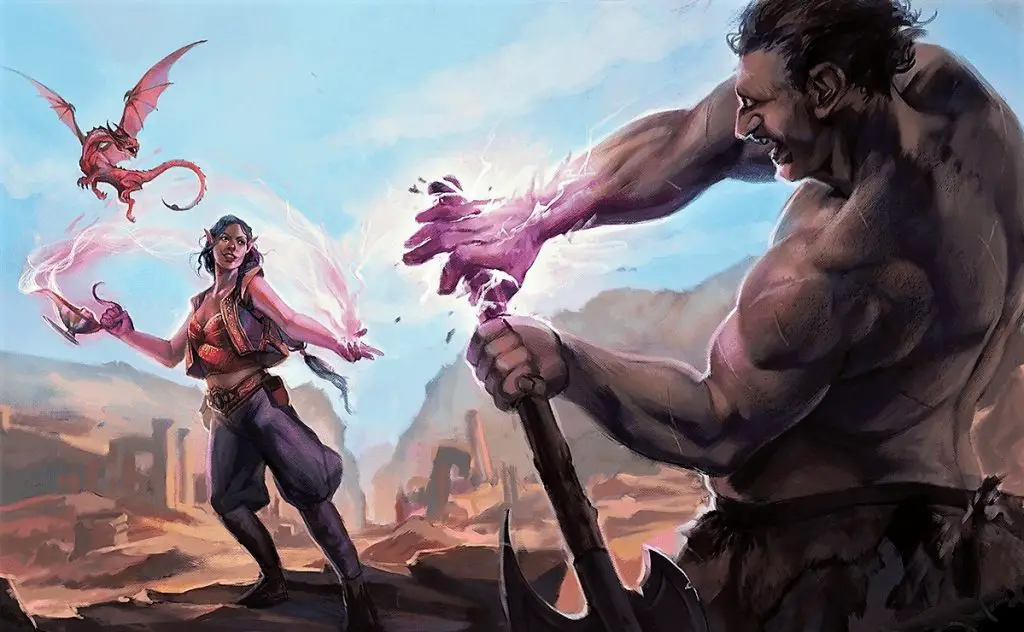
The Genie
You’ve never had a friend like this! Or a Patron either, for that matter…
This is basically four subclasses in one. While they all share the same features, you gain new spells and slight changes to each feature depending on which type of Genie you have chosen as your Patron.
Because Genies are elemental beings, each is associated with a different element. Djinni are air, Efreeti are fire, Dao are earth, and Marid are water.
More than perhaps any other Warlock Patron, the Genie really plays with the idea of what a Warlock can be both thematically and mechanically!
Oh, and you also gain the reality-shaping Wish spell at the later levels with this subclass!
- Genie’s Vessel: Gain a lamp, urn, or another such vessel. This works as your spellcasting focus and powers other features.
- Bottled Respite: Poof into the safety of your Genie Vessel. Use it for resting or for storing your many treasures!
- Genie’s Wrath: Deal extra elemental damage with your attacks based on your chosen Genie’s elemental type.
- Elemental Gift: Use a bonus action to give yourself the ability to fly for 10 minutes!
- Sanctuary Vessel: Bring up to five friends into your vessel with you. Short rests in the vessel only take 10 minutes and increase the number of hit points recovered when anyone inside spends hit dice!
- Limited Wish: Ask your Genie to cast one spell of level 6 or lower from any spell list even if you don’t have the required material components!
Make all your wishes come true with the full guide to the Genie Warlock!
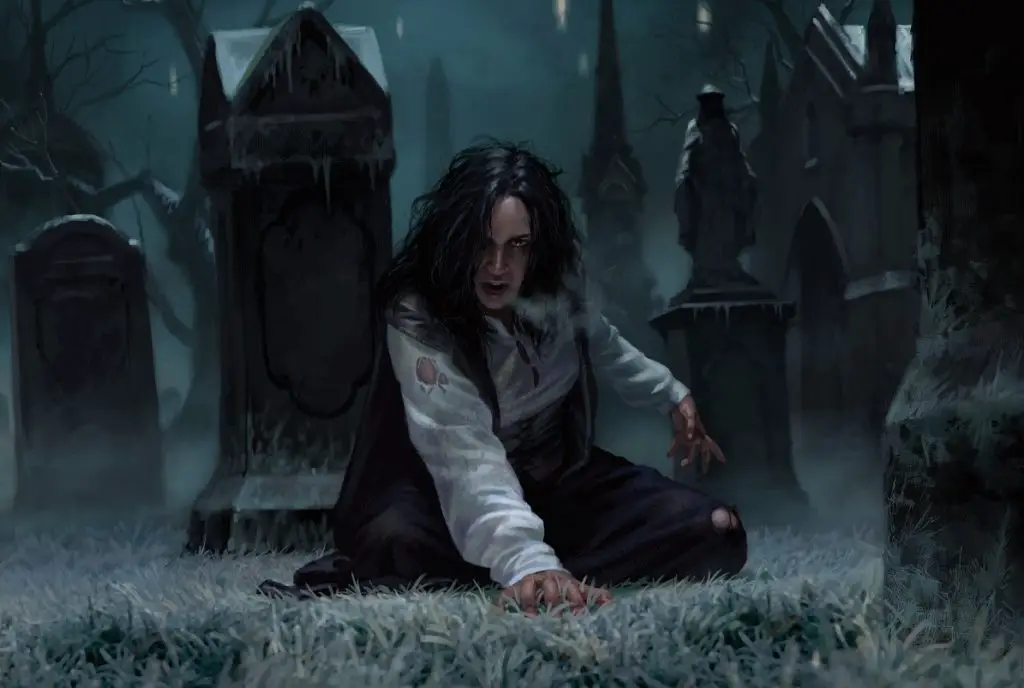
The Undead
Coming in from the cold, we have yet another Warlock subclass that blurs the line between life and death.
Similar to the Undying Warlock, these Warlocks have made their pact with someone or something that has overcome death. It might be a lich, a powerful vampire, or a Mummy Lord that has given you another chance at life… or something that resembles it anyway…
These Warlocks are great at putting out lots of damage, especially necrotic. However, they also offer some extra support to their party in the form of buffs while also inflicting some nasty debuffs on their enemies.
- Form of Dread: Take on a terrifying form as a bonus action for 1 minute. Gain temporary hit points, become immune to fear effects, and scare the wits out of your enemies!
- Grave Touched: Change your damage type to necrotic once per turn. Deal increased necrotic damage if you’re in your Form of Dread!
- Necrotic Husk: Gain resistance to necrotic damage but become immune to it when in your Form of Dread. When you drop to 0 hit points, drop to 1 hp instead and send out a necrotic blast of energy to affect everyone of your choice within 30 feet.
- Spirit Projection: Once per long rest, separate your spirit from your body. Useful for scouting, sabotaging enemies’ plans, and being virtually impossible to drop in combat as long as your body is protected!
Become death itself with this guide to the Undead Warlock!
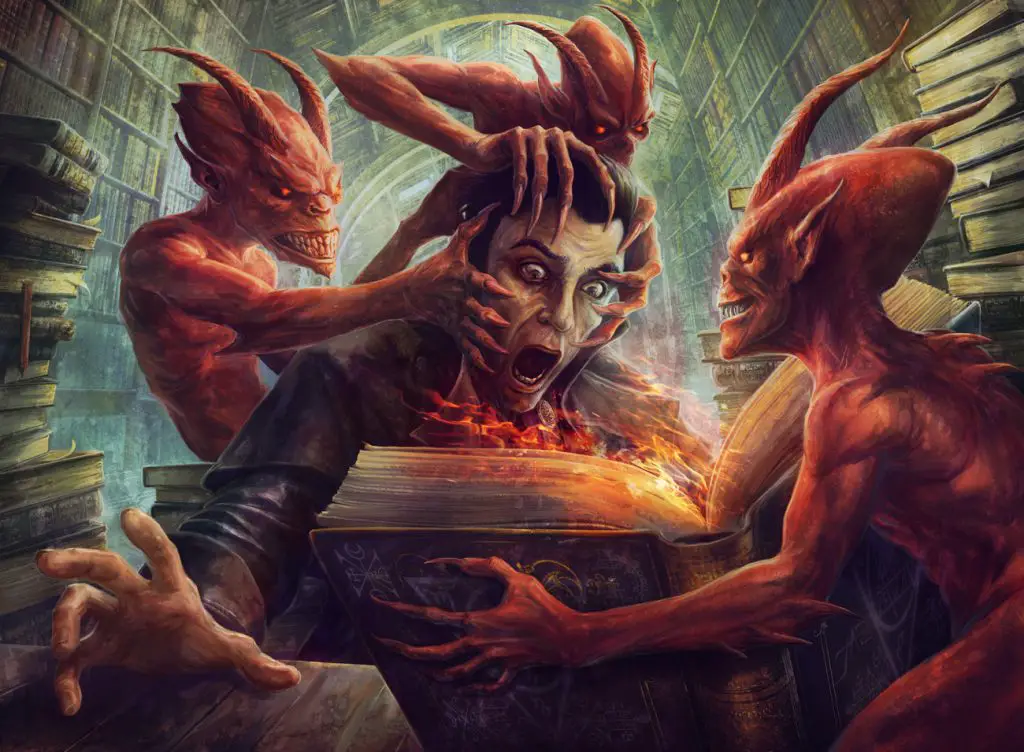
Warlock Spellcasting Explained
Casting spells as a Warlock works differently than with other classes.
You’ve got a lot more moving parts which can make it seem really complex at first. Once you see how it all connects, though, it’s much more straightforward!
So let’s take a closer look!
The Warlock Spell Table
First things first, you want to check out the Warlock’s Spell Table. This appears together as part of the Warlock Table in the Player’s Handbook but I’ve separated it in this guide to hopefully make it more focused.
| Warlock Level | Cantrips Known | Spells Known | Spell Slots | Slot Level |
| 1 | 2 | 2 | 1 | 1 |
| 2 | 2 | 3 | 2 | 1 |
| 3 | 2 | 4 | 2 | 2 |
| 4 | 3 | 5 | 2 | 2 |
| 5 | 3 | 6 | 2 | 3 |
| 6 | 3 | 7 | 2 | 3 |
| 7 | 3 | 8 | 2 | 4 |
| 8 | 3 | 9 | 2 | 4 |
| 9 | 3 | 10 | 2 | 5 |
| 10 | 4 | 10 | 2 | 5 |
| 11 | 4 | 11 | 3 | 5 |
| 12 | 4 | 11 | 3 | 5 |
| 13 | 4 | 12 | 3 | 5 |
| 14 | 4 | 12 | 3 | 5 |
| 15 | 4 | 13 | 3 | 5 |
| 16 | 4 | 13 | 3 | 5 |
| 17 | 4 | 14 | 4 | 5 |
| 18 | 4 | 14 | 4 | 5 |
| 19 | 4 | 15 | 4 | 5 |
| 20 | 4 | 15 | 4 | 5 |
Casting Spells
Unless otherwise indicated, you’ll be pulling your chosen spells from the Warlock Spell List.
When casting spells, you use your Charisma modifier as your Spellcasting Ability.
This is important for determining your Spell Save DC (the number that enemies must meet or beat to resist your spells) and your Spell Attack Modifier (which is added to your rolls for spell attacks like Eldritch Blast.)
Spell Attack Modifier = your proficiency bonus + your Charisma modifier
When you are using a spell attack (like the Warlock staple, Eldritch Blast), you roll your d20 to make the attack. Add the spell attack modifier to your roll. If you meet or exceed your target’s Armor Class, you hit!
It’s very similar for enemies attempting to make saving throws against your spells. The enemy must meet or exceed your Spell Save DC to resist the effect or take less damage (depending on the spell.)
Spell Save DC = 8 + your proficiency bonus + your Charisma modifier
You can increase your abilities as a spellcaster as you level up. Your proficiency bonus will naturally increase as you take more levels in Warlock. Put your Ability Score Increases into Charisma until it reaches the maximum score of 20 to also increase your spellcasting abilities!
Keep in mind that different spells take different times to cast. Most will take your Action, but some may have to be cast using your Bonus Action or Reaction. This is detailed in the spell’s description.
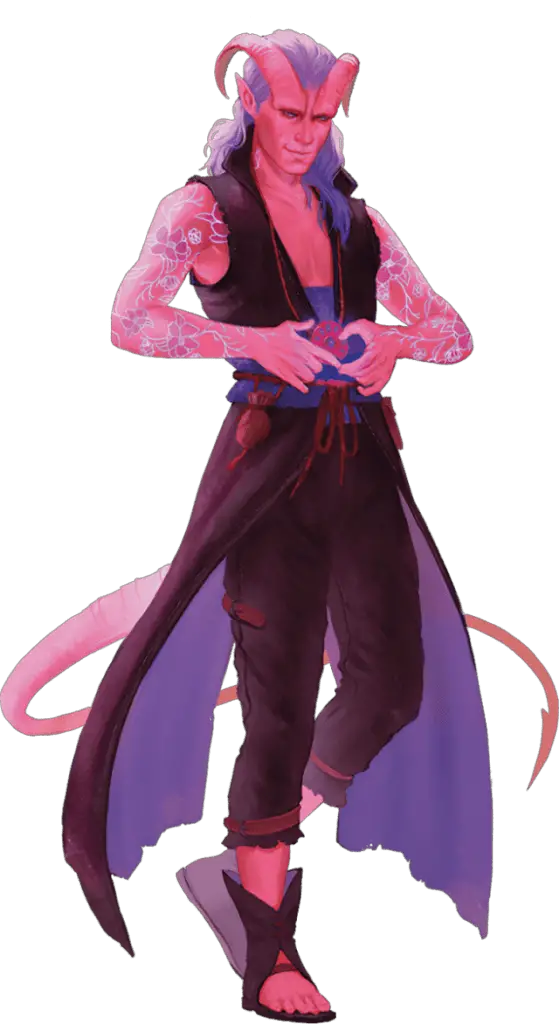
Spell Slots
Warlocks have a number of Spell Slots depending on what level they are. Spell Slots represent the number of spells that you can cast before needing to take a rest and recover the slot.
You will only ever have a few spell slots available to you. That is why it is so important to make use of your Eldritch Invocations and to choose your spells wisely.
Thankfully, you also recover all of your spells on a short rest instead of a long rest like all the other spellcasters. It is well worth it for you to take a breather after a combat encounter if you expect another one to be coming up soon!
Spell Levels
Most spellcasters have different spell levels that they can cast spells at. Warlocks have one spell level that increases as they level up.
This means that every spell you cast is done so at that spell level. If you are casting a lower-level spell, it is very likely that its effect increases as a result of being “upcast” in this way.
For example, if you are a level 5 Warlock then all your spells are cast at level 3. Casting a level 1 spell like Burning Hands would instead be done at level 3.
Burning Hands does 3d6 damage normally, but upcasting it lets it deal an extra 1d6 damage for each slot level above 1. So, in this case, you’re dealing 5d6 damage if your enemies fail their saving throws!
Also, important to know is that cantrips are not the same as spells. They don’t use spell slots and are not upcasted in this way.
It’s worth prioritizing spells that get an extra effect for being cast at a higher level. That said, don’t rule out spells that don’t get the extra benefit completely. When you need the utility, you need it regardless of whether it’s giving you anything extra!
Ritual Spells
Many spells are tagged as “ritual spells” in D&D 5e. These are spells that casters can use without expending a spell slot by spending an extra ten minutes to cast them.
By default, Warlocks do not have the ability to cast ritual spells. They can, however, gain it by taking the Pact of the Tome and choosing the Book of Ancient Secrets Invocation.
Otherwise, they would need to pick up the Ritual Caster feat.
If you’re planning on going Pact of the Tome, that’s a solid Invocation to choose. Otherwise, I’d say save the ritual spells for a different caster if you can. You don’t want to spread yourself too thin when it comes to your spell selection!
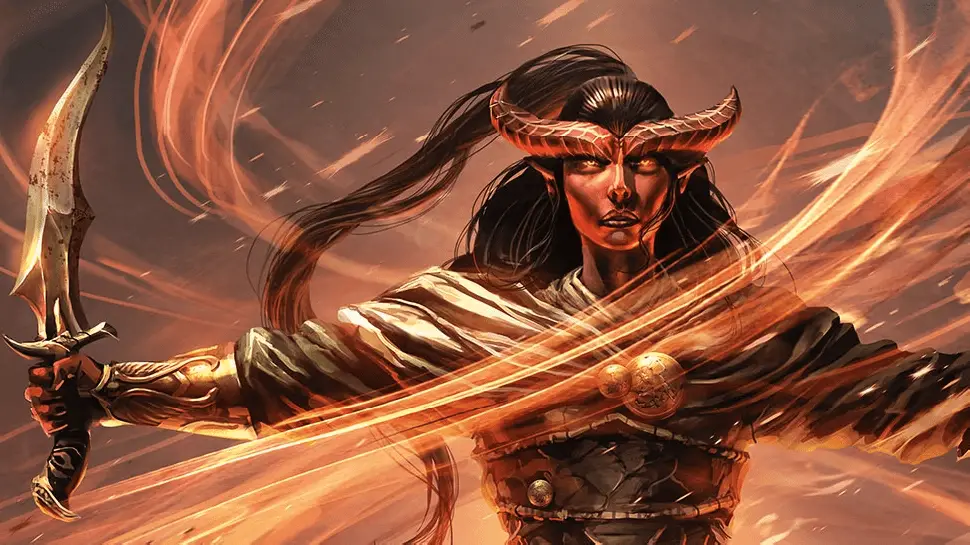
Arcane Focus
To cast spells, you will require either a spell component pouch or Arcane Focus. You have one of these (your choice) from the start. The same rules apply for both.
An Arcane focus is some item that you use to channel your magic. It could be a wand, orb, rod, crystal, or some other such thing that you use for casting spells.
When you are casting spells, you must have this focus in your hand.
Choosing and Changing Spells
You learn more spells as you level up as shown on the Warlock Table. Spells that you learn must equal to or less than your current Slot Level (also shown on the Warlock Table.)
So, at level 5, you can learn a new spell that is level 1, 2, or 3.
If you find yourself outgrowing (or just never using) a particular spell on your list, you can change it out when you level up.
To do so, choose one spell that you know and replace it with another spell from the Warlock spell list. This new spell must be of a level less than or equal to your current Spell Slot level.
You want to be careful when choosing spells. Unlike most other spellcasters, you can’t change your spells anywhere near as frequently so you want to focus on options that will help you beyond the immediate moment!
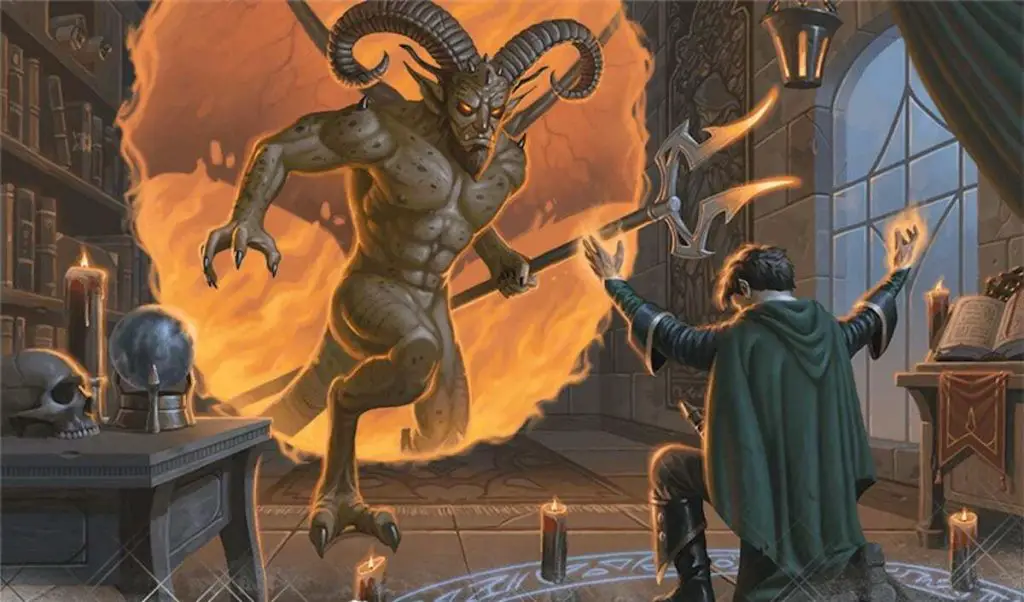
Optimization Tips for Warlocks in D&D 5e
We’re nearing the end of this guide, so let’s go over some optimization tips for your Warlock in D&D 5e!
There is no shortage of ways to build and optimize your Warlock. It all depends on what role you are filling in the party, how you want to fill that role, and what you find interesting.
These are just some tips and pointers that will help you make a character that plays well.
As a quick disclaimer, I’m not saying that this is the ONLY way to build an optimized Warlock. There are endless discussions that could be had about that, but it all falls back to the same criteria that I mentioned.
Instead, I want to focus on what your primary considerations should be in the general sense.
Don’t be afraid to take these ideas and remix them to suit your specific vision for your character. At the end of the day, it is about playing the character that you want to play.
But with that said, let’s get into some quick tips to help you out!
Abilities
We’ll take it from the top with your ability scores!
Charisma is your most important ability score as a Warlock. It powers your entire class by making your spells stronger and enhancing the features you gain as you level up.
- Strength: Unless you’re going to be taking the Pact of the Blade, you don’t really need Strength. Even then, most Pact of the Blade Warlocks will choose the Hexblade Patron which allows you to use your Charisma instead of your Strength modifier.
- Dexterity: Dexterity is directly linked to your Armor Class and skills like Acrobatics and Stealth to keep your footing or sneak around. If you’re a melee Warlock, get this to 14 and let your armor do the rest. Otherwise, make this either your second or third priority as a Warlock.
- Constitution: More Constitution means more hit points. It’s also useful for maintaining concentration on your spells that have ongoing effects. Since you don’t have many spell slots, losing concentration on a big AoE is a major bummer. I recommend making this your second priority after Charisma, but you may prefer a higher Dexterity for the AC.
- Intelligence: Knowledge skills like Arcana, History, and Religion are nice but you don’t want to spread yourself too thin. If you aren’t going for a more bookish character with a focus on these skills, don’t worry about this ability so much.
- Wisdom: Good for general observation like Perception and Insight. You have proficiency in Wisdom saves so those should be less of an issue. In most cases, I would make this a higher priority than Strength but less than the others. If you’re a Hexblade, then Wisdom is your dump stat since you’ll likely want some Strength.
- Charisma: This powers every single thing you do. Give this the highest score you can when you make your character and focus on getting it to a max score of 20 as fast as possible.
Races
Tasha’s Cauldron of Everything introduced optional new rules that remove how your chosen character race affects your ability scores. However, not all groups use that rule.
If you are looking to optimize your Warlock and are not using the Custom Origin rules from TCoE, these are some of the more optimized choices for your Warlock.
Once again, though, don’t hesitate to try something outside this list. You may be surprised!
- Aasimar: While an Aasimar Celestial Warlock especially makes sense, these celestial humanoids are solids picks for Warlocks of any Patron! All Aasimar get a +2 Charisma bonus which is ideal for Warlocks. Additionally, the Healing Hands trait gives you a reliable way to heal yourself up when things get rough!
- Dragonborn: I’m mostly including Dragonborn here for Warlocks who are taking the Pact of the Blade. The +1 Charisma bonus is good for all Warlocks, but the +2 Strength is extra handy if you’re on the frontlines. Not to mention you also gain elemental resistance and a breath weapon based on your Draconic Ancestry as well!
- Half-Elf: Getting a +2 bonus to your Charisma as well as two +1 bonuses for two other abilities of your choice is pretty awesome! When you consider that Half-Elves also get darkvision, advantage against charms, and two bonus skill proficiencies it’s easy to see why a Half-Elf would become a Warlock!
- Tiefling: Tieflings are strongly associated with Warlocks and for good reason! They have a +2 Charisma and a +1 to Intelligence which works well with Warlocks, especially those who are investing in Intelligence skills. Natural resistance to fire will help you out a TON and you’ll also get some extra Charisma spells with your Infernal Legacy trait.
- Variant Human: Variant Humans are so adaptable that they can pretty much do anything. Getting that extra starting feat is incredibly enticing and lets you pick up some powerful additions to your Warlock’s kit right from the start.
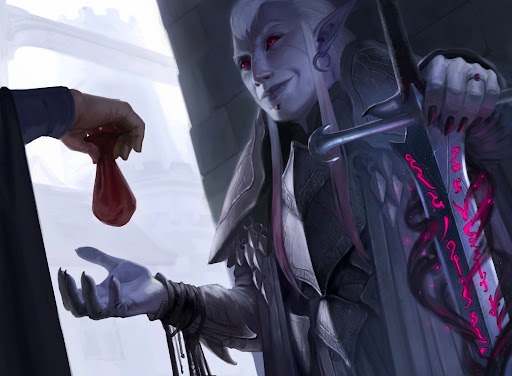
Backgrounds
Warlocks come from many different backgrounds and there aren’t many bad choices.
However, there are some that stand out from the rest! Preference is given here to those that work in with your Charisma as well as give you some extra languages or knowledge-based skills.
- Cloistered Scholar: This background gives you two languages of your choice as well as proficiency in History plus one more Intelligence skill (Arcana, Nature, or Religion) of your choice! You’re also great for getting access to libraries, particularly those that are especially careful about who they let in.
- Courtier: Gain two languages of your choice plus pick up proficiency in Insight and Persuasion. This is a solid background, especially if you’re the face of the party. In an intrigue campaign, your knowledge of bureaucracies and ability to schmooze with the best of them will be very helpful!
- Faction Agent: A deceptively simple background with a lot of unique application for your character’s story. Gain two bonus languages as well as proficiency in Insight and another Intelligence, Wisdom, or Charisma skill of your choice (that makes sense for your chosen faction.)
- Sage: No charisma-based bonuses, unfortunately, but you do gain two languages and proficiency in the Arcana and History skills. As a researcher, you’re great at finding lore. If you don’t know where to find the answer, you almost always know who can point you in the right direction!
- Urban Bounty Hunter: Conceptually a bit of an odd choice, but it’s workable. You gain two skill proficiencies from the list of Deception, Insight, Persuasion, and Stealth. You’ll also gain proficiency with a gaming set, musical instrument, or thieves’ tools.
Feats
Finally, let’s look at some feats that are worth looking at for any Warlock.
Generally speaking, you want to prioritize maxxing out your Charisma score before you take any feats. But sometimes you’ll need to pick up a feat earlier if you’re trying to build your character towards a specific concept or if you’ve chosen to play a Variant Human.
- Eldritch Adept: Gaining an extra Eldritch Invocation may sound small, but it’s incredibly powerful. Don’t sleep on how good this is for you!
- Great Weapon Master: I’m only including this for Hexblades. The synergy between Great Weapon Master and a Hexblade who has taken the Pact of the Blade option is amazing. You’ll be critting like crazy which lets you crank out even more damage and gain extra attacks.
- Inspiring Leader: You’ve got great Charisma. If you feel like sharing the good word of your Patron, your party will gain temporary hit points. They might be a little disturbed depending on who your Patron is, but they’ll see things your way in time. If someone else in your party is taking this (like the Bard or Paladin), don’t bother.
- Spell Sniper: Get a bonus cantrip, double the range of your spells that require an attack roll, and ignore all but total cover. The bonus cantrip is nice, but you’re best off with Eldritch Blast. If you use cover mechanics in your game, this is great. Otherwise, don’t bother.
- War Caster: My favorite feat for pretty much any spellcaster had to make this list. Casting spells for your attacks of opportunity will never get old and having advantage on saves to maintain concentration is very helpful. This is also very useful for Hexblades since they’re otherwise fumbling with their weapon to cast spells that require somatic components.
Conclusion – The Complete Guide to the Warlock Class in D&D 5e
Whew…
Ok, I know that that’s a lot but that should cover all the bases for making and playing a Warlock in D&D 5e!
As always, hit me up in the comments if you have questions. I’m always happy to help!
Fun story, this article almost didn’t even get written. This is my third time writing this behemoth of a class guide after tragedy struck the first two drafts in the form of hard drives dying. I was legitimately beginning to think that this article was cursed!
But now I finally started backing my work up better just in case something so crazy happens again…
Anyhow…
Be sure to sign up for the Tabletop Joab newsletter if you haven’t done so yet! It’s the best way to get all the latest player guides, DM tips, reviews, news, and more for D&D 5e!
You can also follow me on Facebook and Twitter.
If you found this article helpful and want to support the site, you can buy me a coffee here! (It’s not expected, but very appreciated!)

